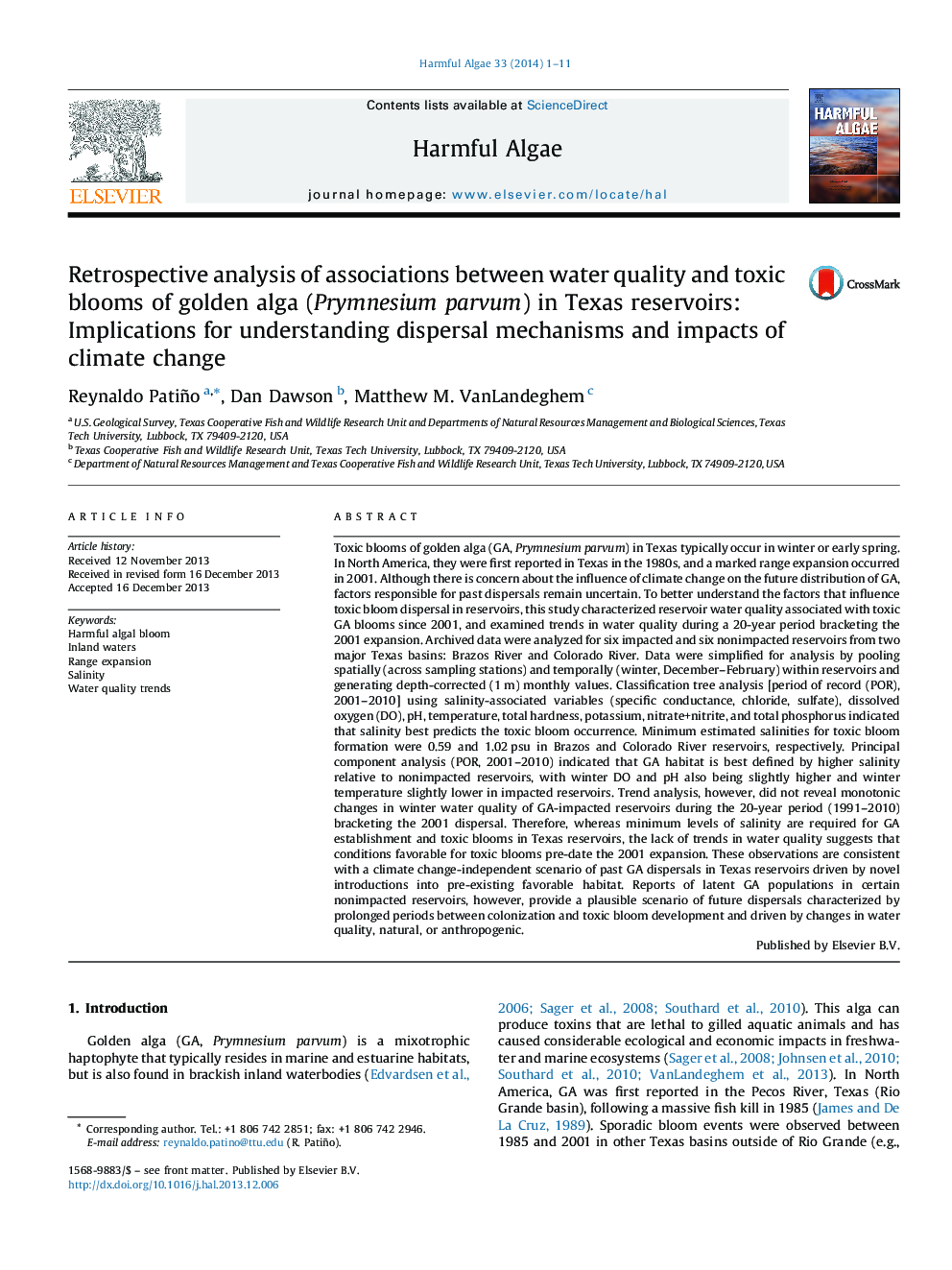| کد مقاله | کد نشریه | سال انتشار | مقاله انگلیسی | نسخه تمام متن |
|---|---|---|---|---|
| 4545298 | 1626938 | 2014 | 11 صفحه PDF | دانلود رایگان |

• High salinity is the best descriptor of golden alga habitat in reservoirs.
• High salinity is the best predictor of golden alga bloom events in reservoirs.
• No trends in water quality were observed in 20-year period bracketing onset of blooms.
• High salinity of impacted reservoirs pre-dates by ≥ 10 years onset of alga blooms.
• Results are consistent with novel introduction hypothesis of golden alga dispersal.
Toxic blooms of golden alga (GA, Prymnesium parvum) in Texas typically occur in winter or early spring. In North America, they were first reported in Texas in the 1980s, and a marked range expansion occurred in 2001. Although there is concern about the influence of climate change on the future distribution of GA, factors responsible for past dispersals remain uncertain. To better understand the factors that influence toxic bloom dispersal in reservoirs, this study characterized reservoir water quality associated with toxic GA blooms since 2001, and examined trends in water quality during a 20-year period bracketing the 2001 expansion. Archived data were analyzed for six impacted and six nonimpacted reservoirs from two major Texas basins: Brazos River and Colorado River. Data were simplified for analysis by pooling spatially (across sampling stations) and temporally (winter, December–February) within reservoirs and generating depth-corrected (1 m) monthly values. Classification tree analysis [period of record (POR), 2001–2010] using salinity-associated variables (specific conductance, chloride, sulfate), dissolved oxygen (DO), pH, temperature, total hardness, potassium, nitrate+nitrite, and total phosphorus indicated that salinity best predicts the toxic bloom occurrence. Minimum estimated salinities for toxic bloom formation were 0.59 and 1.02 psu in Brazos and Colorado River reservoirs, respectively. Principal component analysis (POR, 2001–2010) indicated that GA habitat is best defined by higher salinity relative to nonimpacted reservoirs, with winter DO and pH also being slightly higher and winter temperature slightly lower in impacted reservoirs. Trend analysis, however, did not reveal monotonic changes in winter water quality of GA-impacted reservoirs during the 20-year period (1991–2010) bracketing the 2001 dispersal. Therefore, whereas minimum levels of salinity are required for GA establishment and toxic blooms in Texas reservoirs, the lack of trends in water quality suggests that conditions favorable for toxic blooms pre-date the 2001 expansion. These observations are consistent with a climate change-independent scenario of past GA dispersals in Texas reservoirs driven by novel introductions into pre-existing favorable habitat. Reports of latent GA populations in certain nonimpacted reservoirs, however, provide a plausible scenario of future dispersals characterized by prolonged periods between colonization and toxic bloom development and driven by changes in water quality, natural, or anthropogenic.
Journal: Harmful Algae - Volume 33, March 2014, Pages 1–11